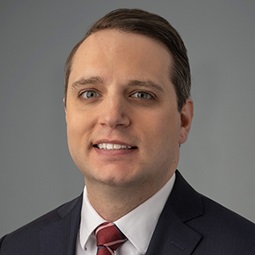Contributed by Doron P. Kenter.
“I can [resolve] that” – Sam the Onion Man, Holes (as modified)
The relationship between bankruptcy courts and non-bankruptcy courts has been of particular importance over the past several years, particularly in the wake of Stern v. Marshall. But well before Anna Nicole Smith, bankruptcy courts were sensitive to the proper disposition of prepetition nonbankruptcy actions against the debtor – and whether they should be litigated in the court in which the action was filed or in the bankruptcy court, as part of the claims process.
In June 2013, Choice ATM Enterprises filed a complaint in the United States District Court for the Northern District of Oklahoma requesting a declaratory judgment to determine the parties’ rights pursuant to a Commission Agreement between Choice and John Petrig. In April 2014, Petrig filed counterclaims against Choice, including for breach of contract, fraud, breach of fiduciary duty, and unjust enrichment. Trial was set for December 15, 2014. Twelve days before trial, Choice filed a motion to stay the trial, on the basis that it would be commencing a case under chapter 11 of the Bankruptcy Code. On December 5, 2014, the trial was stayed, and on December 12, Choice commenced a chapter 11 case. Choice subsequently moved to withdraw the district court proceeding without prejudice, and Petrig moved for relief from the automatic stay to permit the district court litigation to proceed.
The bankruptcy court, then, was faced with a choice (no pun intended): Should Petrig’s claims be litigated in the district court, where Choice had initially commenced the action and Petrig field his counterclaims? Or should Petrig’s claims be resolved in the bankruptcy case (for example, via an estimation proceeding pursuant to section 502(c) of the Bankruptcy Code)? To answer that question, the bankruptcy court offered a tutorial on when the automatic stay should be modified to allow nonbankruptcy litigation to proceed, and what is meant by section 362(d)(1) of the Bankruptcy Code where it provides that bankruptcy courts “shall” grant relief from the automatic stay “for cause.” The bankruptcy court discussed the many tests that have been applied by the courts that have weighed in on the issue, including the twelve (or more) factors that are taken into account in assessing whether to modify the automatic stay. (Although we won’t repeat that discussion in in its entirety, it is available in full here.) The bankruptcy court then recognized that at its core, the decision as to whether to modify the automatic stay is left to the court’s discretion and is “decided on a case by case basis.” Because no binding precedent required the bankruptcy court to apply one particular standard, the court observed that it would consider, under the circumstances, whether:
- Judicial economy would be better achieved by proceeding in the district court or in bankruptcy court;
- Either forum would avoid unnecessary expense and delay;
- The claim is critical to the debtor’s reorganization; and
- The nature of the claim requires expertise beyond the abilities of the bankruptcy court.
Based on these considerations, the bankruptcy court denied the motion for relief from the stay, and decided that Petrig’s claims should be resolved in Choice’s bankruptcy case.
Judicial Economy
First, the trial on Petrig’s claims had not yet begun in the district court, and the discovery that had been taken thus far could be used just as easily in any estimation proceeding in the bankruptcy court. Accordingly, because the estimation process would not delay or duplicate the proceedings, and could, instead, be conducted via an “accelerated process” that could be used “without redundancy, “judicial economy favored the resolution of Petrig’s claims in the bankruptcy court.
Efficiency and Expense
Second, the bankruptcy court noted that estimation in bankruptcy would cost less than would litigation of Petrig’s claims in the district court. Even though discovery and pre-trial motions were complete, the trial had not yet begun in the district court. In fact, the debtor noted that it had not even begun preparing for trial. Even though trial was just days away, the debtor knew as much as a month before that time that it would commence a bankruptcy case before the trial date and automatically stay the proceeding, thus obviating the need to prepare for trial. The bankruptcy court therefore concluded that estimation in the bankruptcy court could similarly minimize or eliminate unnecessary expense or delay for all parties.
Effects on Reorganization
Third, the bankruptcy court looked to the effect of Petrig’s claims on the debtor’s bankruptcy case and its ability to successfully reorganize. Petrig’s claims, if allowed in full, would be the largest claims against the estate. Estimating those claims in bankruptcy, then, would be consistent with the twin goals of chapter 11: (i) preserving the debtor’s business as a going concern and (ii) maximizing property available to satisfy creditors. By resolving Petrig’s claims through an efficient and expedited claims estimation process, a lesser burden would be imposed on the debtor’s management, with less cost to the debtor’s estate. Consequently, because Petrig’s claims were “critical to Debtor’s reorganization,” the bankruptcy court concluded that it would be that much more important to retain those claims in the bankruptcy case.
Expertise
Fourth, Petrig’s claims did not require any specific expertise outside the bankruptcy court’s abilities. Accordingly, the bankruptcy court saw no bar to fulfilling its general responsibility, as contemplated by Congress, to resolve all claims against the debtor, even those that are contingent and/or disputed and therefore required estimation.
Conclusion
The bankruptcy court concluded its analysis by noting that, in enacting section 502(c) and allowing for estimation of claims in bankruptcy court, Congress intended bankruptcy courts to handle disputes (such as those raised by Petrig) “in an expedited manner to accomplish the goals of preserving going-concern value for the benefit of not just debtors, but their creditors as well.” Although Choice ATM may not be quite as polarizing as the ATM machines [sic?] in Maximum Overdrive, it provides useful benchmarks for understanding the types of disputes that should be resolved in bankruptcy court, rather than the nonbankruptcy courts in which they are otherwise pending.













